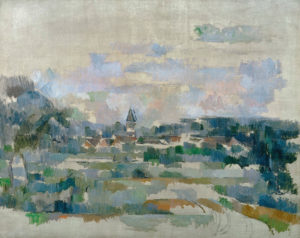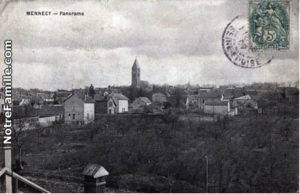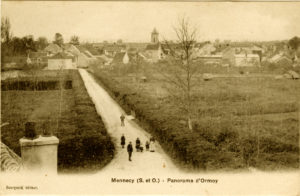R921 – La Route tournante (Mennecy), vers 1904 (FWN374)
Pavel Machotka
(Cliquer sur les images pour les agrandir)
Cézanne had remained in the south for about five years, from 1899 to 1904, and then made two visits to the north, in 1904 and 1905. His stylistic response to the northern landscapes was similar to what we had seen in 1894 in Giverny : a greater emotional distance, cooler colors, and a flattening of the touch. This is in no way an aesthetic judgment; on the contrary, it could be argued that Cézanne’s detachment allowed him to see his canvas’s surface more closely, to feel its flatness more intensely, and let the rhythm of patches dominate. The result is almost always splendid, sometimes in a quiet manner, at other times in a dramatic one, but it seldom betrays the painter’s emotion. La Route tournante, for example, is a seemingly straightforward view of a distant village dominated by a bell-tower; we are separated from it by horizontal fields, and connected to it, at least in part, by the suggestion of a road. In some ways it is an unpromising subject or perhaps a clichéd one, but it makes the painting all the more compelling. Cutting across the tranquil fields, all done in strings of vertical touches, is a tension between the road on the right and the trees on the left, whose top forms a line that prolongs the road. The bell-tower is caught between them, but not in the static center, where it seems to be at first, but well to the left—and it leans to the left as well, as if claiming affinity with the trees. A doubling of its outline on the right, however, so apparently accidental, dislodges it from what would be too firm a perch and makes it strive rightwards again. These are subtle effects, but more distinct than they seem at first, and one has but to hold the painting to a mirror to see them.
Source: Machotka, Cézanne: The eye and the Mind.
Le site sur cartes postales anciennes :




